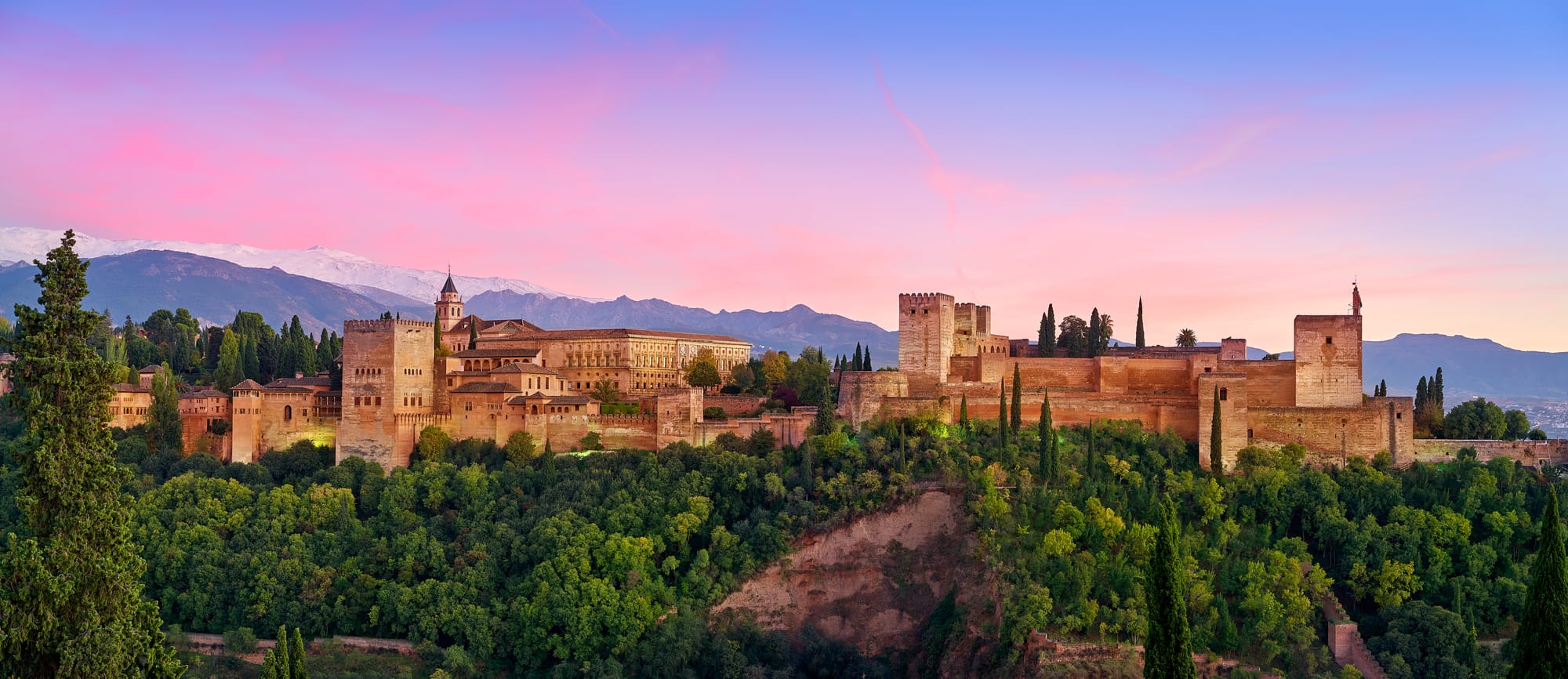Andalusia is a region of hills, agricultural plains, rivers, and streams along the southern coast of Spain. It is rich in history and has been influenced by many cultures.
The Alhambra, located in Granada, is an impressive palace that illustrates the Arab influence between the 8th and 15th centuries. It was built by ►
Andalusia is a region of hills, agricultural plains, rivers, and streams along the southern coast of Spain. It is rich in history and has been influenced by many cultures.
The Alhambra, located in Granada, is an impressive palace that illustrates the Arab influence between the 8th and 15th centuries. It was built by the Nasrids in the 13th century and is located on a hill with a breathtaking view of Granada. It is included in the UNESCO World Heritage List. It remains one of the main tourist destinations to be noticed when visiting Granada as they leave a valuable cultural legacy of their occupation.
In front of this massive fortress, the historic district of the Albaicín is perched on a hill and abounds with narrow streets and traditional white Andalusian houses. In this same area, you can enjoy the 11th-century baths designed by the Moors.
Next, head to Cordoba! Among the must-see sights is the great mosque-cathedral, built in the 8th century and converted into a cathedral in the 16th century after the Reconquista, referring to the gradual reconquest of the Iberian Peninsula by the Christian kingdoms of the region, which succeeded in driving the Arabs out of Al-Andalus. Although modified, it still has many Islamic architectural elements, such as horseshoe arches and columns. This mixture of the two cultures creates a unique and fascinating cultural wealth, reflecting the rich and complex history of the region.
Cordoba is recognized as one of the founding places of flamenco dance. The exact origins of the dance are uncertain, but it is known that it originated in the region of Andalusia in southern Spain, where Romani, Moorish, and Spanish cultures mixed. The term \flamenco\ first appeared in the 18th century and has continued to evolve and develop while remaining true to its Andalusian roots.
Every night, you can go to a venue called the Tablao to see flamenco dance performances. The Tablao Flamenco Cardenal, located in the historic center, is an excellent example of a place where you can enjoy it.
Suppose you want to get away from the hustle and bustle of the city. In that case, the Sierras Subbéticas, a mountain range about 70 km from Córdoba, offers an excellent opportunity to hike or bike in a peaceful natural setting.
The next stop on your tour is the Cathedral of Seville, recognized as the largest Gothic cathedral and the third-largest church in the world. This building was erected on the site of a former mosque and housed the tomb of Christopher Columbus. In addition, the Giralda, a minaret built in the twelfth century, was transformed into a bell tower after the Reconquista in 1248. Its height of 97.5 meters offers a magnificent panoramic view of the city.
Another emblematic monument is the Alcazar of Seville. This fortified palace was built in the 14th century for the Christian kings on the remains of an old Arab castle. It was designed in a Mudejar style, combining Islamic and Christian architecture. Both buildings were declared UNESCO World Heritage Sites in 1987.
If you spend your trip to Andalusia in the spring, it would be a shame not to attend the local festivals such as the Feria de Abril and the Semana Santa, which take place in March/April. These events are actual festivities celebrating Andalusian culture.
If you\'re looking for beautiful beaches, head south to Málaga, Spain, for stunning views of the Mediterranean. Located near the city center and easily accessible by bus or on foot, Malagueta Beach is only a few minutes walk from the famous Gibralfaro Castle, which offers panoramic views of the area.
Malagueta is famous for local events and summer festivities, such as La Feria de Malaga. It is one of the most important festivals in the city, which takes place in August. For ten days, the streets are invaded by locals and tourists, who dance, sing, eat, and drink in tents and booths set up for the occasion. The Feria de Málaga celebrates the city\'s reconquest by the Christians in 1487 and attracts thousands of visitors of all ages. ◄
